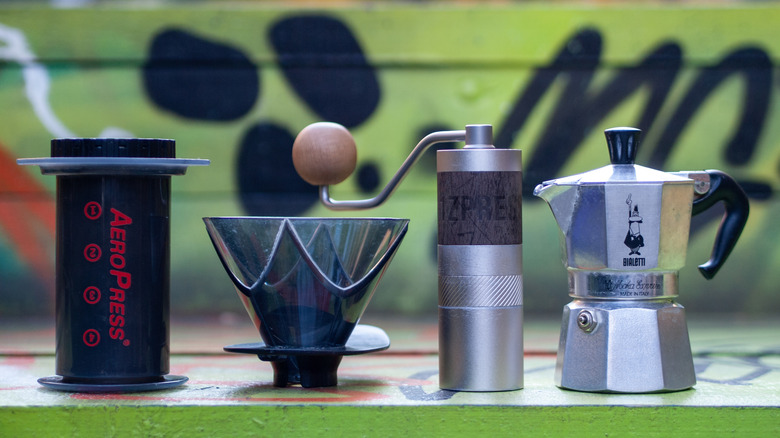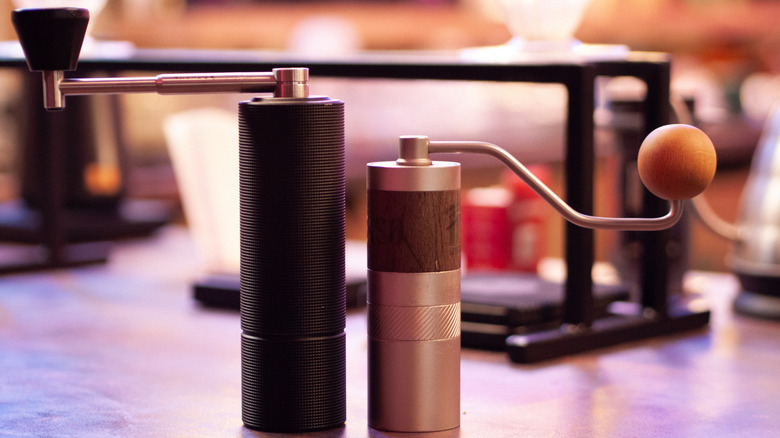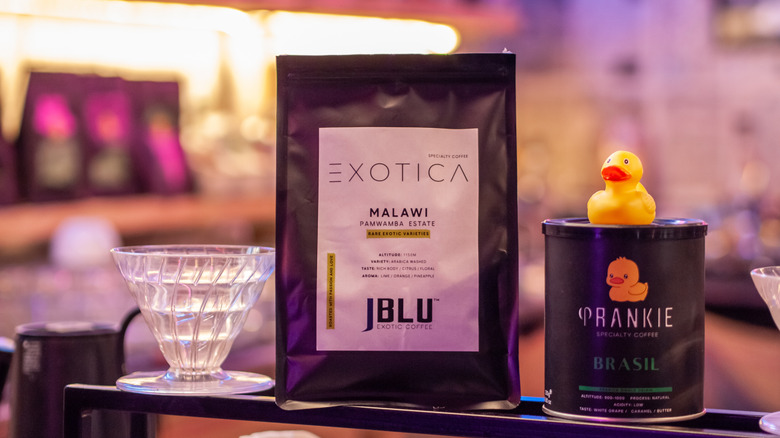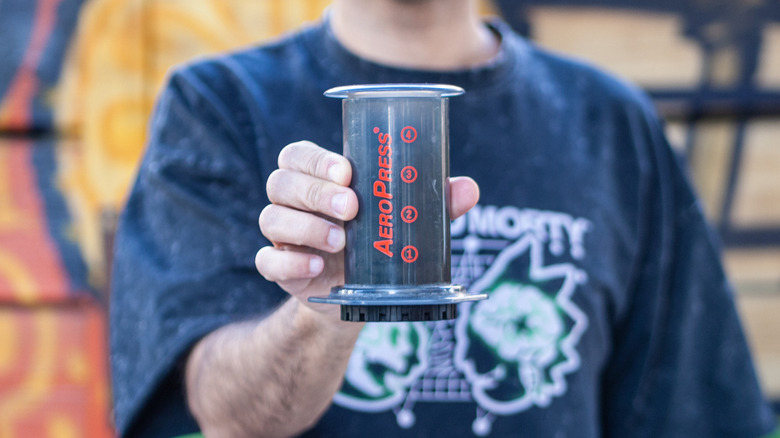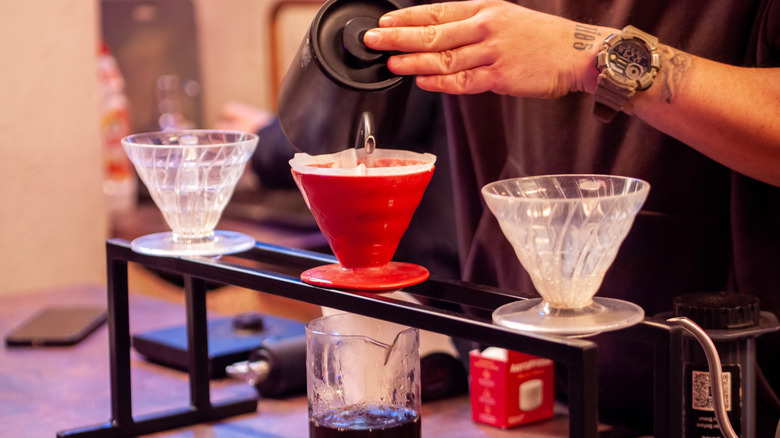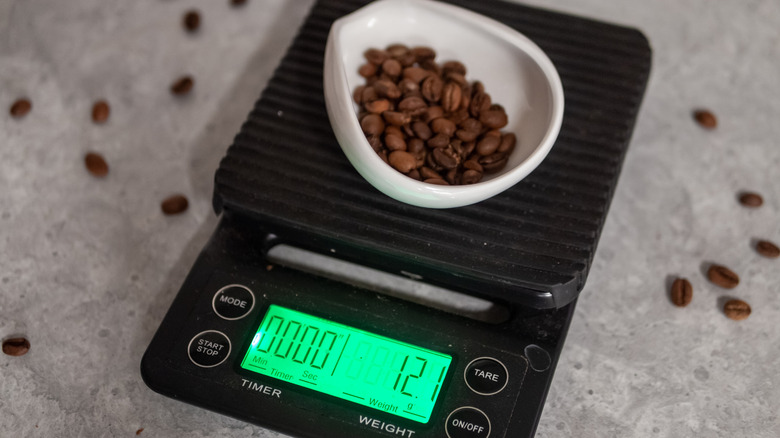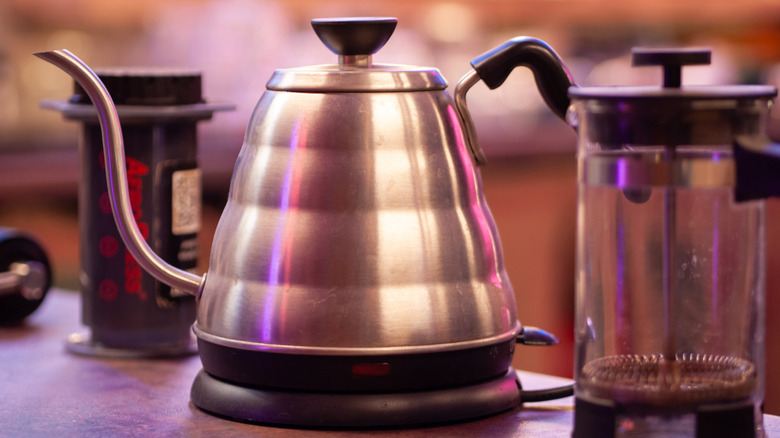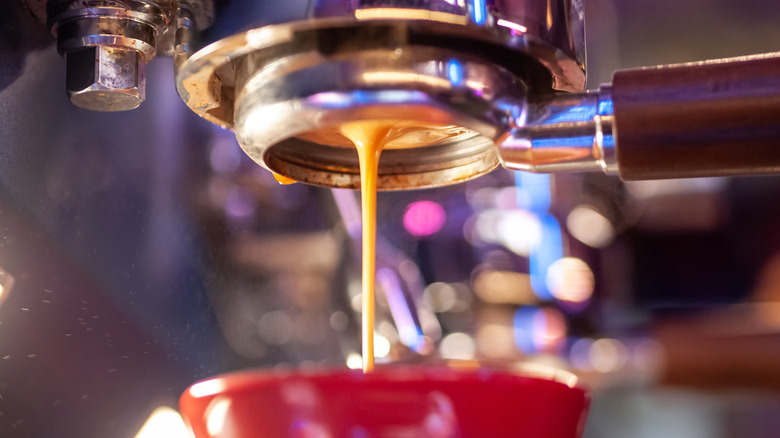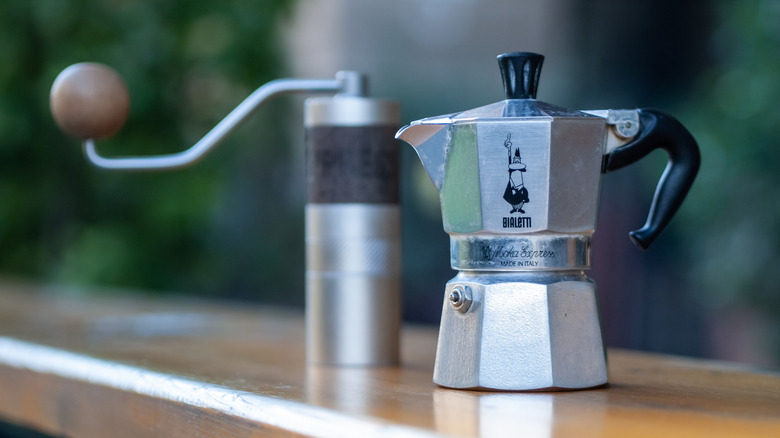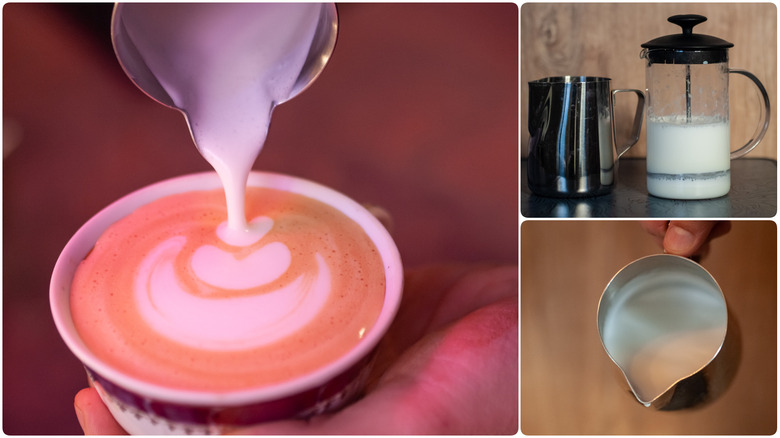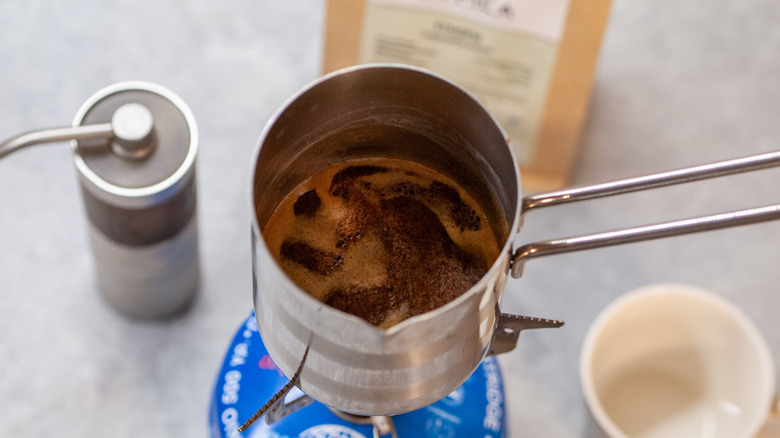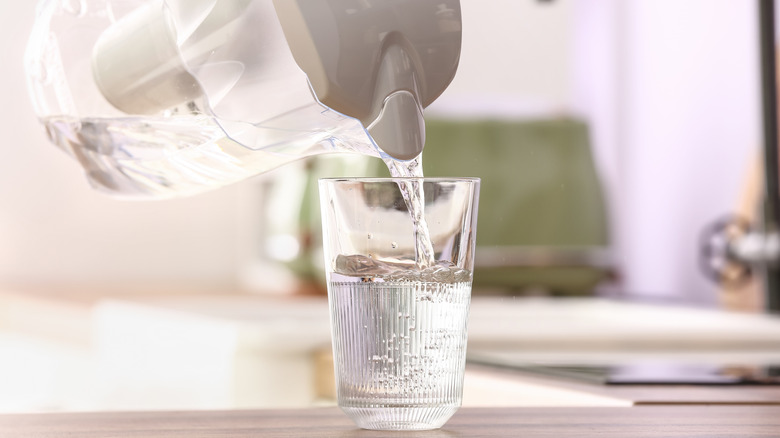Budget-Friendly Gadgets And Expert Tips For Making Incredible Coffee At Home
We may receive a commission on purchases made from links.
From its origins on the Ethiopian plateau to becoming one of the world's most consumed beverages, coffee has fascinated millions around the world. But it wasn't always smooth sailing; when travelers brought coffee from Arabian countries to Europe in the 17th century, people feared it, calling it the "bitter invention of Satan."
After the caffeine hit, nobody was complaining. Imagine experiencing that after drinking alcohol every morning — it must've been life-changing. Predictably, coffee quickly conquered the Western world and became the go-to morning drink among workers. Coffee houses quickly emerged everywhere, and people even brewed the beverage at home.
Still, 'bitter' remained coffee's recurrent theme for centuries. Even today, most coffee beverages we drink are bitter — that's why sugar and cream are a common addition. Once the pandemic hit, I learned that coffee can also be tasty, on its own. In fact, venturing deeper into the world of this beautiful plant opened a world of flavor that I never knew existed. Sweet. Acidic. Complex. Coffee wasn't just a caffeine hit anymore — it was an experience.
However, what I also learned through my journey was that coffee is pretty difficult to work with. You'll need to invest time into the coffee world to get that perfect cup. Although some might lead you to believe, though, you don't need a lot of money to get started. In this piece, I'll give you all the cheap gadgets to make incredible coffee at home, sprinkled with some expert tips. Enjoy!
Hand Burr Grinder
The first thing I learned through my coffee journey is that pre-ground coffee is a one-way ticket to stale brews. Coffee oxidizes quite quickly, and once you grind the beans, that process accelerates dramatically. Oxidization kills most subtle flavor compounds, and in my experience, pre-ground coffee starts tasting dull only a day after opening the package. Meanwhile, whole beans stay fresh for much longer.
Thankfully, you don't need an expensive electric coffee grinder to experience fresh-ground coffee at home. Hand burr grinders will outperform their electric counterparts at a fraction of the cost, producing a more flavorful cup. Each of them has a grind adjustment wheel, allowing you to grind for various coffee brewing methods. Hand grinders are an essential gadget to get excellent coffee when camping, too. The best part — they are very cheap. The Timemore Chestnut C2 is one of the cheapest grinders with conical steel burrs, which produces excellent results; you can go even cheaper, but then you'll get ceramic burrs, which give less satisfying results.
I started with a cheap ceramic burr grinder, and it took almost three minutes to grind a 15-gram (0.53 ounces) dose on the coarse end of things. My current grinder, the excellent 1Zpresso Q2 heptagonal, does the same job in less than 40 seconds while producing a much more consistent grind. It also comfortably outperforms the Timemore C2 in my testing. Still, it's pretty small and can store only around 20 grams (0.7 ounces) of coffee.
Pro Tip: Buy Freshly Roasted Specialty Coffee from Local Roasters
Imagine having the fanciest coffee gear money can buy, then using it to make coffee with beans you bought from the supermarket. You would have just wasted thousands on equipment, because the results will be meh at best. The coffee might be of solid quality, like 100% Arabica, but consuming it months after the roast date will yield underwhelming results. Flat. Bitter. Bland. Thankfully, most big cities today have at least one specialty coffee roaster. There, you'll buy coffee just a few days after roasting and get a rich, flavorful cup.
It's not only freshness; specialty coffee is elaborately monitored from farming to roasting. Unlike commodity coffee, farmers get fair prices and thus can dedicate more resources to make each bean count. Moreover, specialty coffee is grown at higher altitudes, resulting in less yield and a higher quality bean. Specialty coffee roasters also have a close relationship with the farmers and are part of the non-profit SCA (Specialty Coffee Association), which ensures sustainable and equitable practices.
Above all else, specialty coffee just tastes better. Not only that, but you'll be able to taste regional differences between countries and farms, and even processing methods, like natural or washed. Buying locally also means talking directly to the roaster. You might learn something new about coffee beans, and you'll support a local business that treats farmers fairly, rather than a profit-oriented conglomerate.
AeroPress
The AeroPress is one of the cheapest and simplest ways to get to 'Flavortown.' It consists of a cylinder, a perforated cap with a paper filter, and a plunger. To make coffee, you first put the paper inside the cap and screw it on the cylinder. Then, place the AeroPress over a mug or pitcher. Next, put ground coffee inside the chamber. Pour hot water over the grounds and place the plunger on top. Wait for a minute or two, then gently press the plunger for the brewed coffee to drip inside your cup.
The real beauty of the AeroPress is its flexibility. You can play with the coffee-to-water ratio. Ground more coarsely or finely. Change the water temperature or wait for longer to extract more flavor. The possibilities are endless, so much so that a World AeroPress Championship is taking place every year, where competitors from over 60 countries present their unique recipe. You can try most of those recipes yourself by installing the excellent Aeromatic app for Android and iOS, which has built-in timers and grind size parameters.
The AeroPress is today available in three sizes (Go, Regular, XL). Most are made from BPA-free plastic, though the company recently launched an expensive "Premium" glass model. I had the original plastic AeroPress for three years, and it's one of the sturdiest gadgets I've owned. It's easy to clean and can fit the 1Zpresso Q2 grinder inside its chamber. It's my go-to brewer for camping or any outdoor activity.
Pour-Over Coffee Maker
Drip coffee makers continue to be the most popular coffee gadgets in the U.S., with 32% of coffee drinkers using them for their past-day consumption in 2024, according to Statista. Still, you can get a more flavorful cup with a pour-over brewer. This is a similar brewing style to a drip machine, but you take matters into your own hands — literally, as you are the one that heats the water and pours it over the coffee bed. In a way, it's a more rewarding experience, but the added control lets you extract flavor notes you didn't know existed before.
As far as pour-over brewers go, there are conical and flat-bottom models. Unsurprisingly, they produce different cups. One is not better than the other, though — just different. According to a study by the SCA, in general, conical brewers produce a more acidic, citrusy cup, while flat-bottom brewers accentuate the sweeter, more floral coffee notes. Fortunately, pour-over brewers are inexpensive, so there is no reason why you can't have them both.
That said, I would recommend starting with the plastic Hario V60 conical brewer. This is one of the most popular pour-over gadgets globally that costs as much as two Americanos at Starbucks. I also have the Mugen version of the V60 which produces a slightly sweeter drink. As for a flat-bottom brewer, the glass Kalita Wave is an excellent, though a bit more expensive option on Amazon. It's also made exclusively from glass, which feels more premium but can break more easily.
Coffee Scale
A coffee scale is one of the critical accessories to take your coffee to the next level. Preferably, you want one that measures down to 0.1 grams and has a built-in timer. Both these features are helpful when making any type of coffee. For instance, when you make a pour-over, the scale will let you know when and how much water to add to achieve the perfect beverage with any type of coffee.
Meanwhile, for espresso, you can measure the ratio of ground coffee to beverage and the time that it takes to pull a shot, both of which greatly influence the taste. Some recipes will give you a more acidic, fruity cup, others a sweeter one. AeroPress recipes also require a scale to achieve that perfect coffee drink each time. The best part: a coffee scale makes every recipe repeatable, to the gram/second.
However, this is not a call to buy a fancy coffee scale that costs a few hundred bucks. These add some quality-of-life features, like Bluetooth and smartphone apps with built-in recipes from professionals. Still, a cheap model like this one on Amazon has everything you need to make a tasty beverage.
Gooseneck Kettle
Americans don't buy electric tea kettles, but if you are into coffee, you should definitely consider one. Even a cheap electric kettle from Amazon will be around 80% more efficient at heating water than your stove, according to Inside Energy. It's much quicker, too, and if you only use an AeroPress, it'll do the job just fine.
However, going for a gooseneck kettle will take your pour-over game to the next level. You can make pour-over with a regular kettle, but the precision "gooseneck" spout allows you to control the water flow more accurately. Instead of an irregular stream, you'll get a laminar flow that disturbs the coffee bed just enough for optimal flavor. Moreover, gooseneck kettles are designed with ergonomics in mind; you'll be holding them for longer periods when making pour-overs, so a perfectly weighted kettle makes sense.
And if the gooseneck kettle also has temperature control, like the excellent Timemore Fish Smart BPA, you are on cloud nine. Water temperature plays a huge role in how the coffee drink tastes. The hotter it gets, the more flavor compounds it extracts from the grounds. However, going near the boiling point also means extracting more astringent flavors.
As a general rule of thumb, lightly roasted coffees should be brewed between 199-to-205° Fahrenheit (93-to-96° Celsius). Meanwhile, darker roasts taste better when brewed at 188-to-194° Fahrenheit (87-to-90° Celsius), sometimes even lower. A temperature-controlled kettle works with increments of 1° Fahrenheit, allowing you to experiment to get a perfect cup.
Manual Espresso Machine
Espresso has been notoriously hard to make at home for quite a long time. Even the highest-ranked 'espresso' machines found in stores don't make real espresso. Namely, these machines have pressurized portafilters, which have one tiny hole at the bottom to create high extraction pressure, sometimes up to 20 bar (290 psi). They are great for pre-ground supermarket coffee, which is usually ground on the coarser side but doesn't produce that syrupy drink you have at cafés.
Meanwhile, 'real' espresso makers have non-pressurized portafilters with many holes on the bottom. These machines require you to grind finer because the coffee puck will be the thing that boosts pressure. Here, you'll play with up to 9 bars (130 psi), which is the highest recommended pressure for good espresso. Unfortunately, good espresso machines with temperature and pressure control can cost hundreds, if not thousands of dollars.
However, like with most gear in this piece, you can delete all the electronics and opt for a manual espresso machine. These have a non-pressurized basket, and allow you to control the extraction pressure manually. They won't steam your milk, but read on, because there is a cheap solution for that as well. One of the cheapest options for excellent café quality espresso is the sub-$100 Flair NEO Flex from Amazon. Or, you can go for the tiny Wacaco Picopresso portable espresso maker, which is great for camping.
Moka Pot
The moka pot is a hugely popular coffee brewer that makes a concentrated, espresso-like drink. It's not real espresso because it extracts the coffee at only 1.5 bar (22 psi). Still, what matters is that it produces an excellent beverage. Invented in 1933 by Alfonso Bialetti, this small, yet mighty stovetop brewer became a household item in 90% of Italy's households. Thanks to its sturdy, made-from-metal construction, it remains the go-to coffee maker for most outdoor folks, too.
The moka pot is easy to use. Put water in the bottom chamber, then, put the basket inside and fill it with ground coffee. Close the moka pot with the top part, place it over a heat source, and wait for the magic to happen. In my experience, though, you'll get better results if you heat the water to around 80° Celsius (176° Fahrenheit) first, and then install the basket. A paper filter over the basket will produce an even more well-extracted yet cleaner shot. Also, you'd want to lower the flame once the liquid flows to ensure laminar flow, which also affects taste. For a step-by-step guide on the best technique, check out James Hoffman's moka pot video.
Today, moka pots come in all shapes and sizes and aren't only made by Bialetti. In fact, models made from no-name brands cost just $15.99 on Amazon. You can also choose between lighter aluminum models or dishwasher-safe, stainless-steel moka pots. Any will do, really, as the technique matters more.
French Press (Hacked)
The French press, also called 'Cafetiére' is one of the oldest home coffee brewers. It's a basic contraption equipped with a metal mesh filter that you use to remove the grounds from the coffee liquid. Still, that filter leaves quite a lot of silt in the cup, which is why the French press has fallen out of fashion lately, particularly among coffee nerds.
A simple paper filter might force you to take the French out of the cupboard. It doesn't have to be any particular filter — you can cut pour-over or drip filters to size and use them. Still, if you don't want the hassle, these Caffi paper filters are specifically made for the French press. For the technique, wet the filter to help it stick to the metal mesh filter, and then press down.
However, another hack makes the French press a staple among home baristas, particularly those who drink milk-based coffee drinks. Namely, this brewer can make excellent, café-quality milk foam for cappuccinos or flat whites. Two-time World Latte Art Championship Open champion Lance Hedrick explains the simple process in this video. If it's good enough for him, you bet it's good enough for us. That said, if you want a more 'Instragrammable' shot with latte art, a cheap milk frothing pitcher is an important addition. Use the foam to make tasty beverages with both espresso and moka pot coffee.
Ibrik (Cezve)
Turkish coffee is one of the oldest coffee brewing methods, dating back to the 16th century. It's a household staple in Turkey, but also Balkan and Mid-Eastern countries. Being from North Macedonia, I grew up with this coffee, and it helped me explore the coffee world from a young age.
The best part is that Turkish coffee is the simplest coffee beverage to brew outside perhaps making instant coffee. Start by putting water in a small pot called Ibrik or Cezve and putting it over a stovetop. When the water reaches around 60° Celsius (140° Fahrenheit), put a very finely ground, almost powdery, coffee, and stir. Brew over the stovetop until the liquid starts to rise and then pour it into a small cup.
That's right — no need to filter the coffee grounds. Since it requires a very fine grind, they will settle on the bottom of the cup. The resulting beverage is full of flavor but has a slightly thinner body, unlike any other style of coffee.
Cezves have traditionally been made from brass, though copper is today also a popular choice. You can still make excellent Turkish coffee in stainless steel cezve, which is also dishwasher-safe.
Pro Tip: Use Filtered Water to Enhance Flavor
After the coffee beans, filtered water is the second most important thing to improve your coffee game. It makes sense because coffee is mostly water. Tap water usually contains a lot of impurities, like bicarbonate, which accentuates the bitter flavor compounds inside the coffee, or dulls the whole flavor. You also don't want soft water without minerals, as it will lead to a flat-tasting drink. Alkalinity also plays a huge role, with high pH water killing some of the desirable acidic notes of coffees. Ideally, you want the water to be from 7-8 pH.
A water filter with reverse osmosis like the Waterdrop Filter X Series-X16 is an enticing option because it removes most impurities. However, it also lowers the mineral content quite dramatically. Perfect Coffee Water lets you restore the mineral content with minerals that improve the flavor, though it's expensive. You can also use packaged mineral water, preferably one with total dissolved solids ranging between 30-100 TDS. This isn't very sustainable though, as most mineral water is packaged in plastics. Another solution is to mix regular tap water with distilled water, finding a ratio that works best for you.
For these reasons, water filter pitchers or faucet filters might be the best solution. They aren't as successful as reverse osmosis at removing impurities, but still remove enough to give you a better-tasting cup. Likewise, enriching distilled water with special minerals will yield superior results, but it's expensive and geared toward experts.
